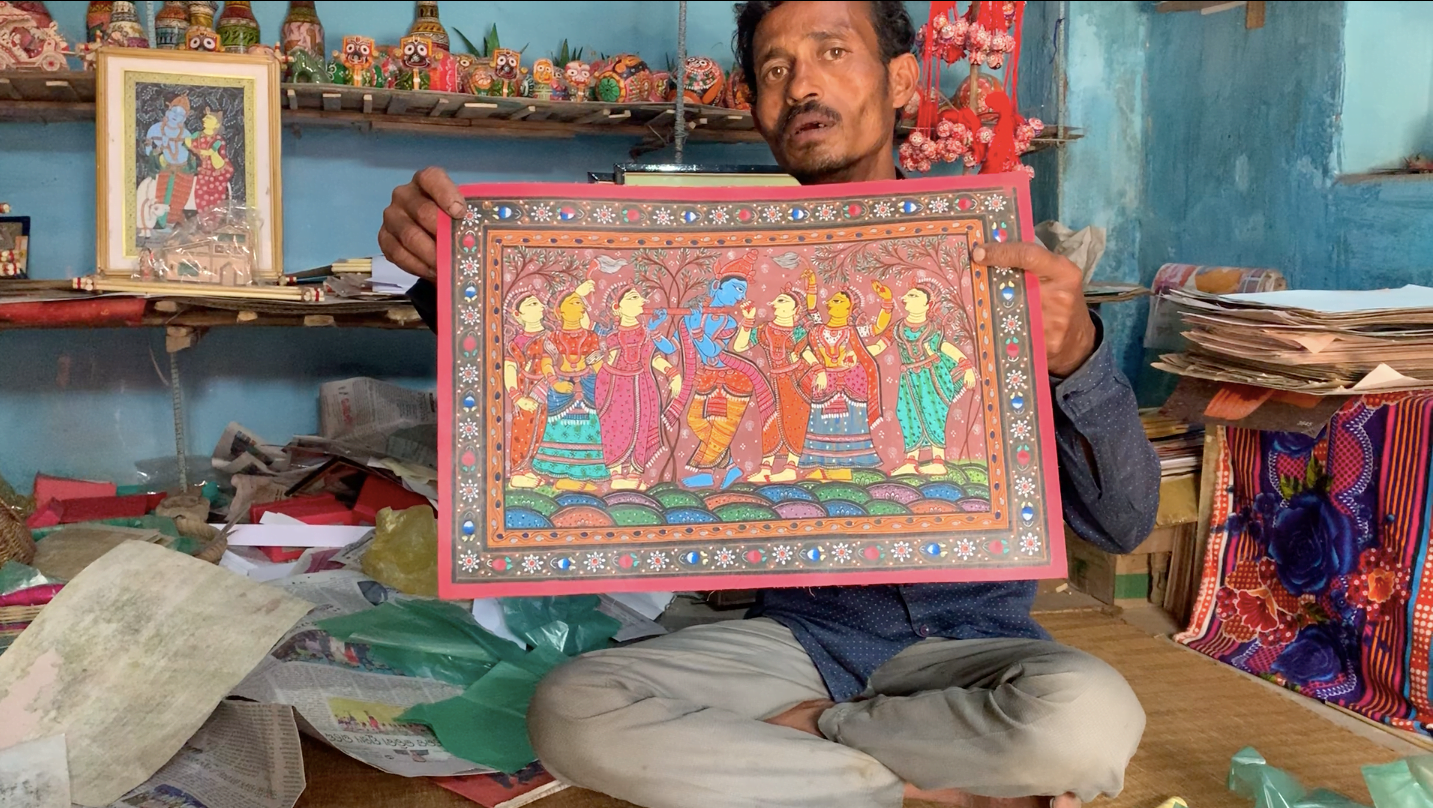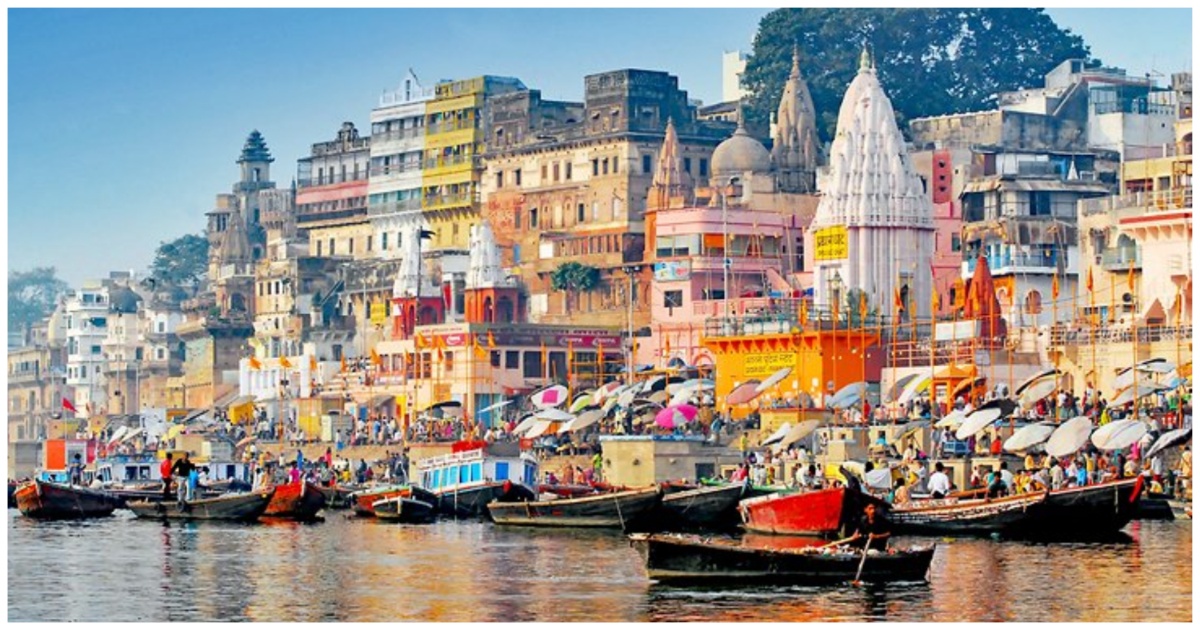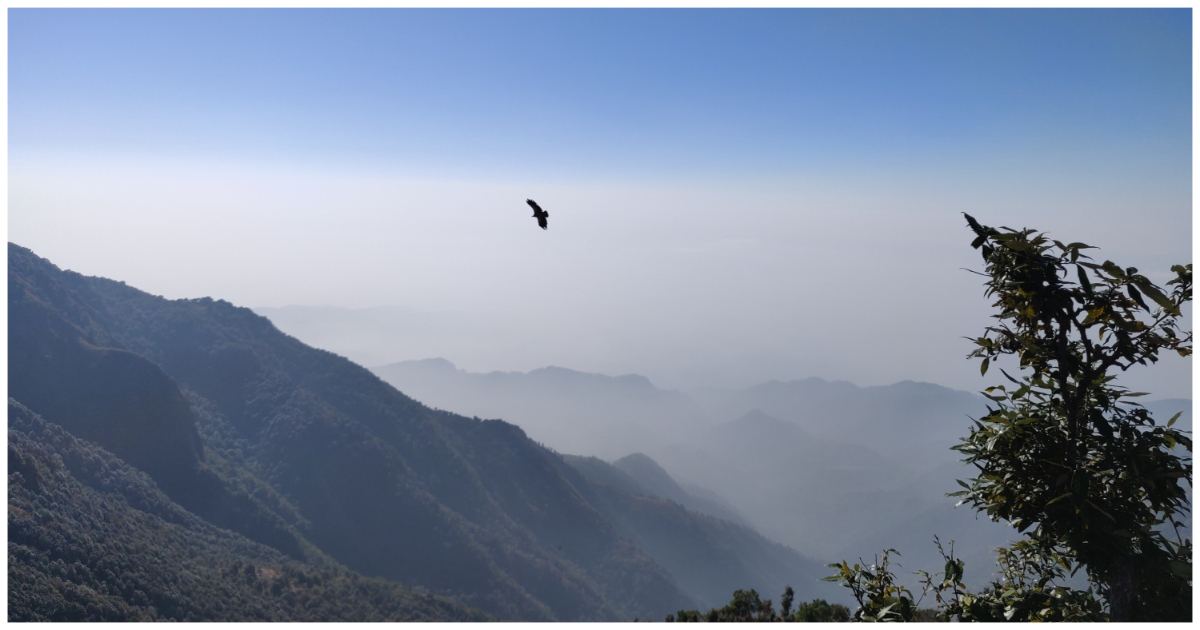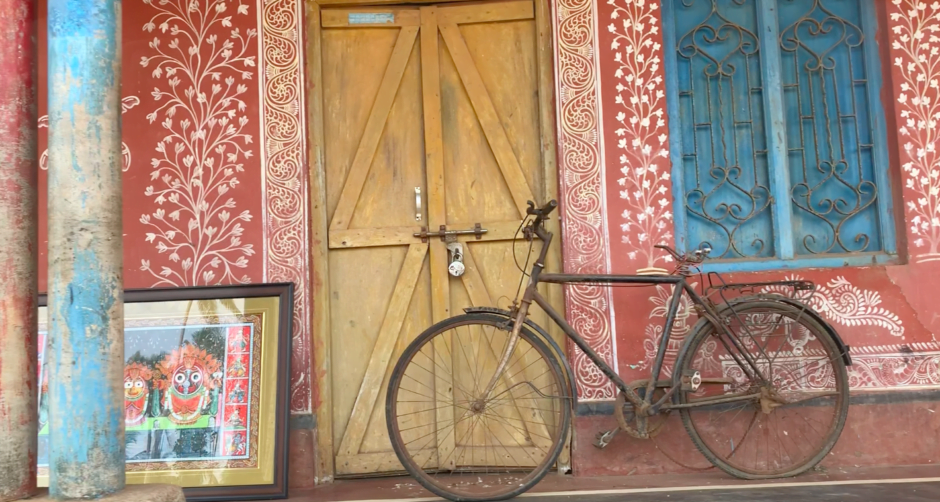
My expectations from the heritage village were very high. It had been described to me as a village with close to 300 families all taking part in creating art for sustenance. Raghurajpur is nestled about 10 km away from the pilgrim city of Puri. The residents of the village create the 12th-century art of Pattachitra and a host of other handicrafts.
The ambience becomes colourful as soon as you enter the village. Each house in the village is an artist’s studio. Here, art is worship and survival. Tourists are welcome to walk into any home to visit the locals and see the way the art is created, right in front of their eyes.
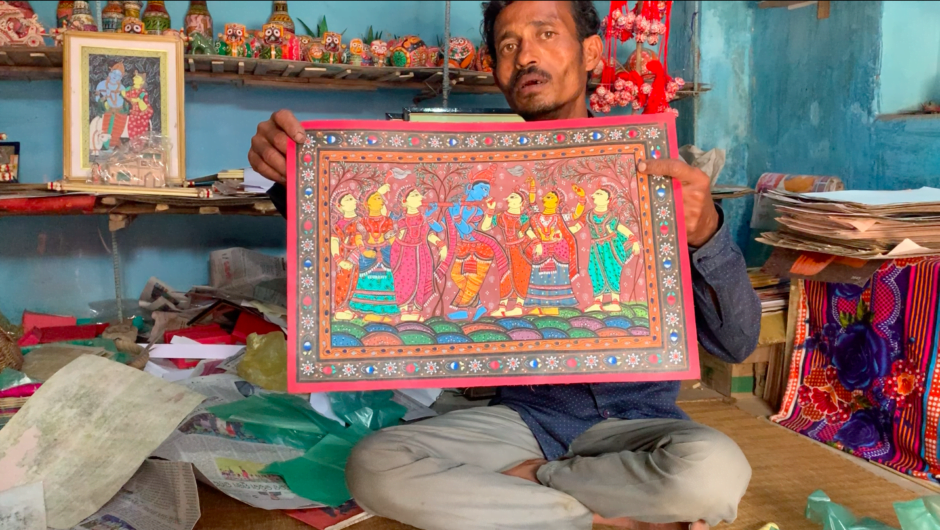
While there’s a plethora of handicrafts that are made inside these homes, it is mainly known for its Patachitra and palm leaf paintings. ‘Pata’ stands for canvas and ‘chitra’ means painting. The canvas is made out of dried tamarind seeds and cotton sarees. For the palm leaf paintings, leaves are hardened and cut into panels, etched with designs, and then coloured using homemade kohl.
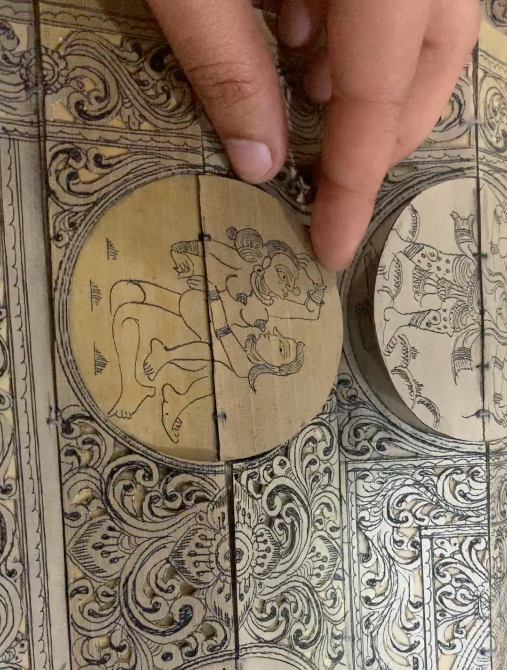
However, there are some unique aspects of art as well. Tribal art is commonly found in many of the artefacts. Some of the palm leaf paintings follow the Khajuraho style of erotica in its art.
The art found in the homes of Raghurajpur is an inheritance passed down from generations. In almost every home you will find paintings and pictures that are over 60 years old. The whole family pitches in to create the artwork. Children begin training in the art form from the young age of 11 and go one to create beautiful pieces of art for the rest of their lives.
In 2000, the Indian National Trust for Art and Cultural Heritage (INTACH) declared Raghurajpur a ‘heritage village’. This has helped these artists explore other traditional art forms as well. Apart from Pattachitra and palm leaf paintings, you will find artists now making papier-mâché toys, masks, coconut crafts, wooden toys, etc. Both men and women of the village work as artists.
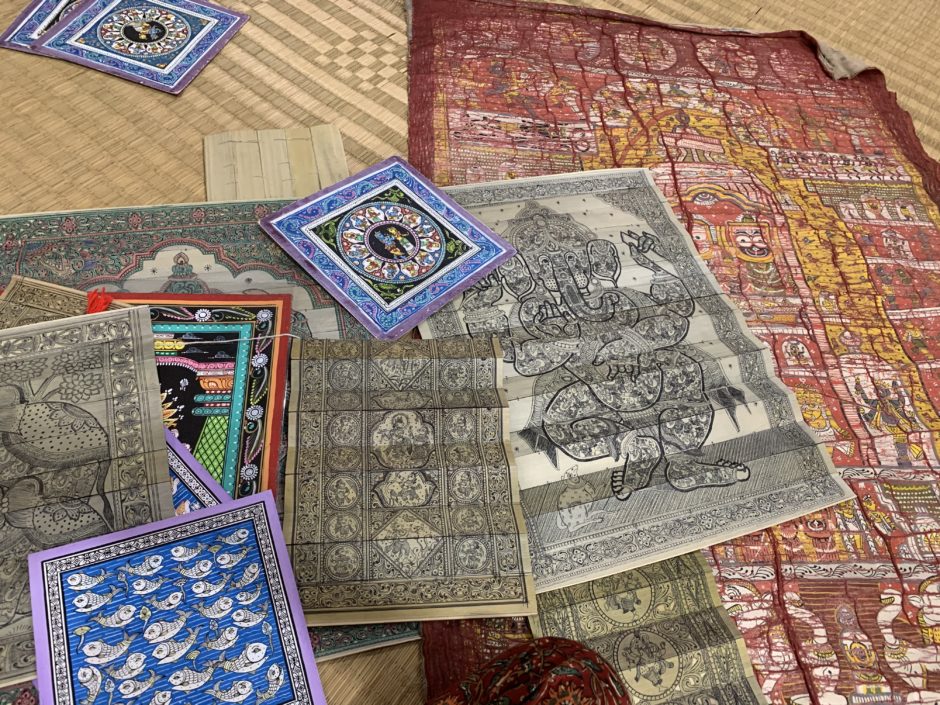
In Raghurajpur, art is not merely a source of livelihood. Rather, it is embedded deep into the culture of the village. When you walk into an artist’s home-cum-studio, they are not passive exhibits carrying on their work like no one is watching. Each artist in the village is excited to welcome you into their home and they are excited to talk about their craft.

When I visited the village, I spent about a long time visiting the homes of the artists, listening to the chitrakars intently talking about their work. I found there to be a distinct lack of commercialism in the welcoming lanes of this village. While the artists sell their work, they seemed to find it more important to talk about their craft and tell their stories.
Raghurajpur is a hidden gem that I would highly recommend. If you’re on a trip to Odisha and craving for an offbeat rustic place to visit, this one can’t be missed.
By Nishtha Shanti

